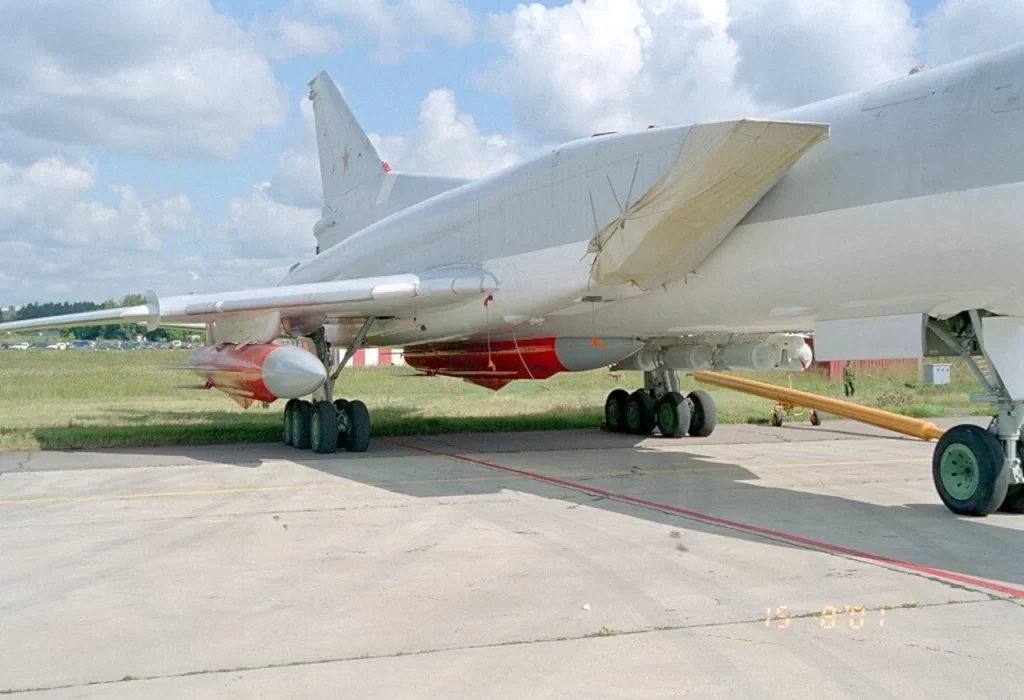The official spokesperson for the Ukrainian Armed Forces Air Force, Yuriy Ignat, said on a television programme following the massive Russian missile drone strike on Ukraine on December 29, 2023, that since the start of the special operation, Russia has launched 300 Kh-22 missiles at military targets in Ukraine, none of which have been intercepted by air defence systems.
Thus far, the Kh-22 and Kh-47M2 Kinzhal missiles have been employed by Russia to impact critical fortified structures, including command centres and underground storage facilities.
As a result of its larger payload, the Kh-22 is the weapon of choice for strikes on area targets such as ammo and fuel depots. On the other hand, the hypersonic Kh-47 is the weapon of choice for precision strikes on targets such as decision-making centres.
The Kh-22 missile was developed in the early 1960s to engage aircraft carriers, large ships, military installations, bridges, and power facilities in combat against opposing air defences.
The Kh-32 is an improved version of the Kh-22 that is physically identical. It was adopted in 2016 and developed for the supersonic bomber Tu-22M3. The new missile has an upgraded rocket engine, a new radar station, and a conventional warhead. Its warhead is smaller, but its range is longer.
The Kh-22 missile’s guidance system is susceptible to radar jamming since it runs on fixed frequencies. Radar jamming is less likely to affect the Kh-32’s multi-frequency radar.
At up to 40 km heights, the Kh-22 may travel between Mach 3.5 and Mach 4.6. The missile can travel up to 1000 km at its maximum range, and its radar can find targets up to 300 km away.

Kh-22 missile is said to have two launch modes- low-altitude and high-altitude. When in high-altitude mode, it ascends to a height of 27,000 metres and dives quickly, reaching a terminal velocity of roughly Mach 4.6. When operating in low-altitude mode, it ascends to a height of 12,000 metres and descends shallowly at a velocity of roughly Mach 3.5.
The Kh-22’s trajectory consists of three segments: the launch phase, which reaches cruising altitude; the cruising phase, which flies at a ceiling of 40 kilometres; and the final phase, which dives for an attack.
The missiles track the terminal phase by comparing radar images and employing precise inertial navigation in order to reach their destination. As a result, the missile cannot be jammed.
The Kh-22 is specifically engineered to take advantage of adversary air defence systems’ speed and altitude limitations to surpass them completely before descending at steep angles towards its intended target. Aerial defence radars are incapable of tracking an approaching or aloft target.
Similarly, the Kinzhal is designed to outperform the altitude and velocity of opposing air defence systems to elude detection. Despite being much lighter and smaller than the Kh-22, the Kinzhal has a far longer operational range.
Its capability of manoeuvring and flying at hypersonic velocities enables it to land on a shallower trajectory, thereby extending its range.
Kinzhal and the Kh-22 are both aerodynamic rather than ballistic. Their speed and approach altitude significantly surpass the capabilities of American Patriot systems and other NATO air defence systems currently stationed in Ukraine.
Their altitude approaches the target’s interception range, but their speed is far beyond.
Although the Kh-22 and Kinzhal’s flight characteristics exceed air defence radars’ capability, air defence systems may attempt to engage and take the risk. As a result, Ukraine’s allegations that it shot down Russian Kinzhal missiles are met with suspicion.
The Kh-22 missile is considered fully impervious to interceptors and hostile air defence systems, as it can sustain strikes from a 20mm rotary cannon or air-to-air missiles.

According to Russian media, the Kh-22’s most notable feature is its capacity to transmit target information in flight with another Kh-22. This capability was included to avoid enemy air defences when attacking an aircraft carrier combat group.
Only one missile uses its self-guidance radar to find the aircraft carrier during an attack. Other missiles in the attack package, which can fly in different directions, remain dark, making it impossible to detect their warheads. If a missile with active radar guidance is destroyed, another missile in the package can step in. In Ukraine, one missile equipped with radar emission sensors can operate as a decoy when used in pairs. Its only purpose in posing as a target is to help pinpoint the precise location of the air defence radar.
Detecting the air defence radar, it can transmit coordinates to another missile in the pair, diving almost vertically from very high altitudes and destroying the radar.
The self-guided warhead of the Kh-22 is said to have a 200–300 km range. This would enable the Tu-22M’s weapon system operator to reroute the missile to a possible target.
Given that Russian forces used significantly more Kh-22s than Kinzhal, it is probable that Ukrainians are more anxious about the former. The 900-kilogram warhead variant of the Kh-22 is more destructive, and intercepting it has proved more difficult than intercepting hypersonic missiles such as Kinzhal and Iskander-M.
